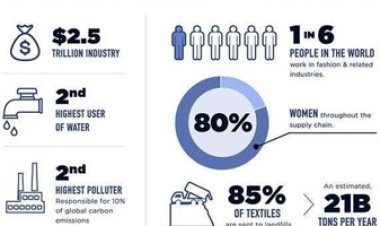How Japanese and Korean Beauty Routines Compare?
Discover the key differences between Japanese or Korean skincare routines. Explore techniques, products, and philosophies for achieving radiant skin.

When it comes to skincare, two countries have made a significant impact across the globe: Japan and South Korea. With ancient beauty traditions and modern innovation, both cultures offer skincare routines that are not only effective but also deeply rooted in their philosophies about self-care and wellness. Whether you're curious about starting a new regimen or wondering which country’s routine works best for your skin, understanding the difference between a Japanese or Korean skincare routine can help you choose the one that aligns with your skin goals and lifestyle.

Japanese Skin Care Routine
The Japanese skin care routine is built on the principles of simplicity, consistency, and natural beauty. Rooted in centuries-old traditions, it emphasizes prevention over correction. Japanese women have long believed that skincare is a long-term investment, and instead of chasing trends, they stick to a core set of high-quality, gentle products. Common steps in a Japanese skincare routine include an oil-based cleanser, foaming face wash, softening lotion (a toner-like product), serum or essence, moisturizer, and a sunscreen to finish. The focus is on gentle cleansing and hydrating the skin to maintain a healthy, youthful glow for years.
Korean Skin Care Routine
On the other hand, the Korean skin care routine is more intensive and often features 7 to 10 steps. This approach encourages deep hydration, layering of lightweight products, and targeted treatment for specific skin concerns. The K-beauty routine typically includes double cleansing, exfoliation, toner, essence, serum, ampoule, sheet mask, eye cream, moisturizer, and SPF. While the steps might seem overwhelming at first, many enthusiasts love the therapeutic and luxurious feel of dedicating time to their skin every day. Korean skincare is also known for its trend-driven innovation and playful packaging that appeals to a broad audience.
Japanese vs Korean Skincare
So, how does one decide between Japanese vs Korean skincare? The answer lies in their fundamental philosophies. Japanese skincare emphasizes purity, balance, and long-term skin health. Their products are minimal, highly effective, and use traditional ingredients like rice water, green tea, and camellia oil. This approach is often less focused on instantly visible results and more on achieving consistently healthy skin. Japanese products tend to avoid strong fragrances and unnecessary additives, making them ideal for sensitive skin.
In contrast, Korean skincare is all about hydration, customization, and glow. The idea is to flood the skin with moisture and nutrients, giving it a dewy, “glass skin” look. K-beauty brands aren’t afraid to experiment with unconventional ingredients like snail mucin, bee venom, fermented yeast, and centella asiatica. This willingness to innovate quickly keeps K-beauty at the forefront of global beauty trends. People who enjoy variety and customization often prefer the flexibility and excitement that Korean skincare offers.
Japanese Beauty Products
Packaging and presentation also reveal a lot about these two skincare philosophies. Japanese beauty products often come in sleek, minimalistic packaging that reflects their clean and sophisticated approach. Brands like SK-II, Hada Labo, DHC, and Shiseido are considered among the best Japanese beauty products for their efficacy and premium formulations. Whether you're looking for anti-aging solutions or hydration boosters, these Japanese skin care brands offer trusted solutions backed by years of research.
In contrast, Korean products are packaged with a sense of fun and whimsy—cute designs, bright colors, and engaging product names. Brands such as Laneige, Innisfree, COSRX, and Etude House provide a wide range of options at various price points. While Japan tends to stick to heritage-based beauty, South Korea leans heavily into trends, making it perfect for beauty enthusiasts who love experimenting.
Japanese Skin Care Products in India
Now let’s talk about availability. With growing global demand, with best Japanese skin care products are becoming easier to access. Online marketplaces and specialized retailers now offer a curated range of Japanese skin products, so Indian consumers can enjoy the same high-quality beauty experience. From oil cleansers to softening lotions and SPFs, there's an increasing presence of best Japanese skin care products available to meet various skin needs across different age groups.
Another term gaining popularity is “Japan skins,” referring to the flawless, soft, and luminous complexion often admired in Japanese beauty culture. Achieving this look involves more than just products—it’s about lifestyle choices too. A consistent skincare routine, a healthy diet, and sun protection are all essential parts of the Japanese beauty equation.
Speaking of sun care, both Japanese and Korean routines heavily emphasize sunscreen use. This is not just an afterthought; it's a daily essential. Japanese sunscreens, in particular, are known for their advanced UV filters, lightweight formulas, and matte finishes, which make them ideal for humid climates like India’s. If you're looking for high-performing sunscreen that won’t clog pores or leave a white cast, many Japanese beauty products offer ideal options.
Another notable difference is the texture and application of products. Japanese formulations tend to be lightweight, non-greasy, and quick-absorbing. This is a practical choice for people who live in warm or tropical environments. It also reflects their no-fuss, no-frills approach to beauty. Meanwhile, Korean skincare often includes bouncier, richer, and sometimes stickier textures that aim to create a moisture barrier and leave the skin with a dewy glow.
From a cost perspective, both Japanese and Korean beauty ranges offer affordable and luxury options. The best Japanese cosmetics are often found at both high-end department stores and drugstores, and they maintain a reputation for quality across the board. For example, brands like Hada Labo offer dermatologist-approved hydration products at accessible prices, while SK-II targets the luxury segment with its cult-favorite facial treatment essence.
Japanese vs Korean Beauty
At the heart of this debate—Japanese vs Korean beauty—is not a competition but a comparison of two equally powerful approaches to skincare. While Japanese skincare vs Korean skincare offers different routines, both ultimately strive for the same goal: healthy, glowing skin. In fact, many skincare enthusiasts choose to blend the two routines, incorporating Japanese cleansing oils and sunscreens with Korean essences and sheet masks for a hybrid routine that gives the best of both worlds.
Whether you choose a Japanese skin care routine for its simplicity and time-honored tradition, or a Korean skin care routine for its innovation and excitement, both offer proven results. For those who want minimal steps with maximum results, Japanese skincare is ideal. But if you love treating your skincare routine like a mini spa session every day, Korean products are your go-to.
In conclusion, there’s no definitive winner in the Japanese vs Korean skincare debate. It’s about what works for you. Your skin is unique, and what matters most is consistency, quality, and care. With the increasing availability of both Japanese and Korean skincare options—especially Japanese skin care products in India—you’re free to explore, experiment, and discover the perfect routine that brings out the best in your skin.















